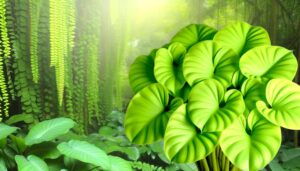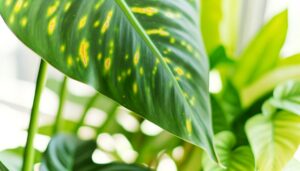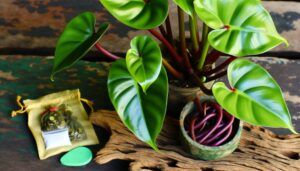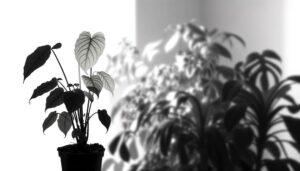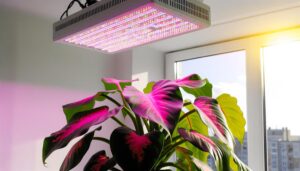What Is the Best Soil for a Heartleaf Philodendron?
The best soil for a Heartleaf Philodendron is a well-draining, nutrient-rich medium that retains moisture effectively. A mix containing peat moss, perlite, and orchid bark is ideal.
Peat moss aids in moisture and nutrient retention, while perlite enhances aeration, preventing soil compaction. Orchid bark improves structural integrity and drainage.
This composition prevents waterlogging, which is essential for avoiding root rot. Ensuring macronutrients like nitrogen, phosphorus, and potassium, along with essential micronutrients such as iron, is crucial for healthy growth.
Using this soil mix in a container with drainage holes promotes robust root development. Explore further to perfect your plant care.
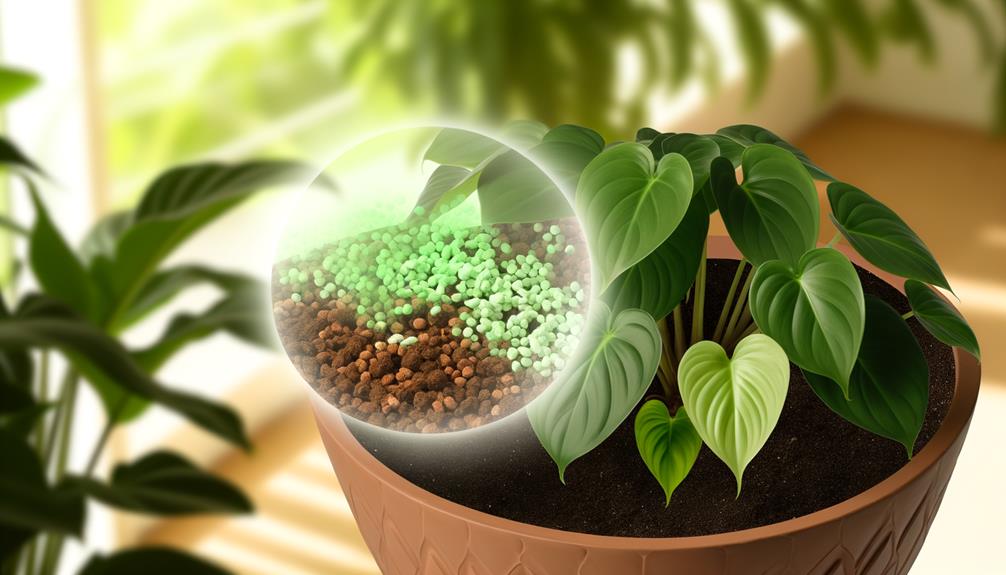
Key Takeaways
- Use a well-draining soil mix to prevent waterlogging and root rot.
- Include components like peat moss, perlite, and orchid bark for optimal moisture retention and aeration.
- Ensure the soil mix retains moisture effectively while allowing excess water to drain.
- Peat moss is essential for moisture and nutrient retention.
- Perlite enhances aeration and prevents soil compaction.
Ideal Soil Composition
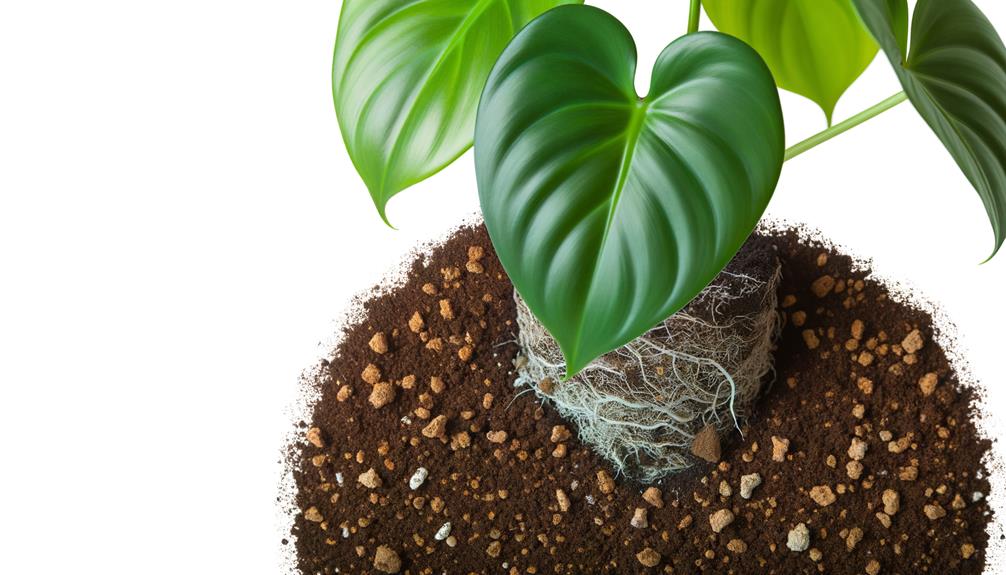
The perfect soil composition for a Heartleaf Philodendron should be a well-draining mix that retains moisture without becoming waterlogged. It typically consists of peat moss, perlite, and orchid bark. Peat moss provides the necessary organic matter to retain moisture and nutrients, creating a slightly acidic environment conducive to plant health.
Perlite, a volcanic glass, enhances aeration and prevents soil compaction, ensuring that roots have access to oxygen. Orchid bark contributes to the structural integrity of the mix, promoting efficient drainage. This combination creates a balanced medium that supports robust root development and minimizes the risk of root rot.
For ideal results, the soil mix should be light and airy, facilitating proper water retention and drainage to meet the plant's physiological needs.
Importance of Drainage
Proper drainage is essential for Heartleaf Philodendrons to prevent waterlogging, which can lead to root rot and other fungal diseases. Ensuring ideal drainage requires both the right soil composition and container selection.
A well-draining soil mixture typically includes components such as perlite, peat moss, and orchid bark. These materials facilitate aeration and efficient water movement, protecting the root system.
- Perlite: Boosts aeration and prevents soil compaction.
- Peat Moss: Enhances moisture retention while allowing excess water to escape.
- Orchid Bark: Supports drainage and provides structural support.
- Container with Drainage Holes: Guarantees water exits, preventing waterlogging.
Nutrient Requirements
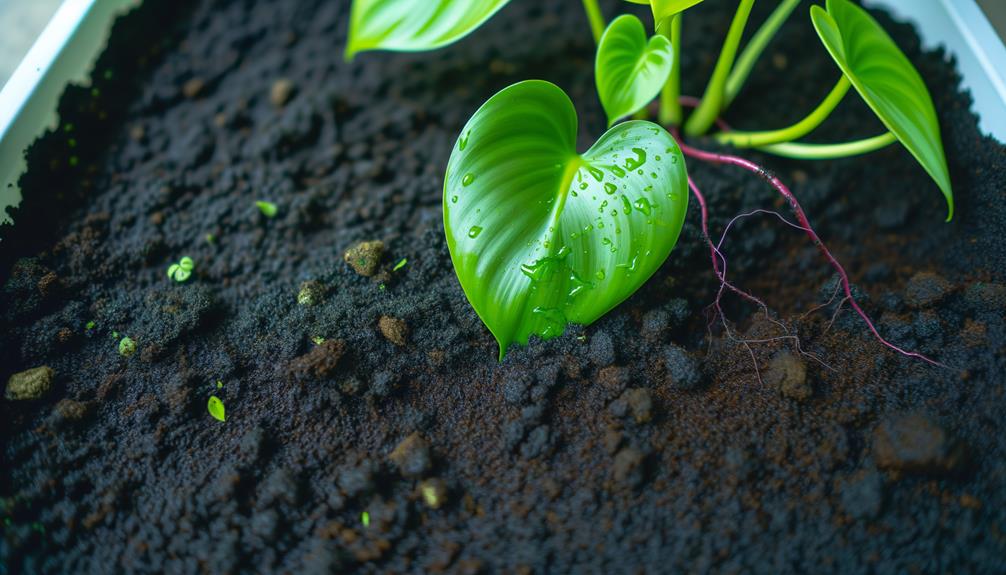
Best nutrient balance is essential for the healthy growth of Heartleaf Philodendrons, necessitating a soil mixture rich in essential macronutrients and micronutrients. Macronutrients such as nitrogen (N), phosphorus (P), and potassium (K) are key for foliage growth, root development, and overall plant vitality. Micronutrients like iron (Fe), manganese (Mn), and zinc (Zn) support metabolic functions and chlorophyll synthesis.
| Nutrient | Function |
|---|---|
| Nitrogen (N) | Promotes foliage growth |
| Phosphorus (P) | Enhances root development |
| Potassium (K) | Improves overall plant health |
| Iron (Fe) | Essential for chlorophyll synthesis |
| Manganese (Mn) | Facilitates enzyme activity and photosynthesis |
Regularly amending the soil with a balanced, slow-release fertilizer ensures a steady supply of these nutrients, fostering ideal growth conditions.
Best Soil Mixes
Achieving the most suitable nutrient balance for Heartleaf Philodendrons starts with selecting the appropriate soil mix that promotes aeration, drainage, and moisture retention. The ideal soil mix should be lightweight and well-aerated to prevent root rot while retaining sufficient moisture for best nutrient absorption.
Consider including the following components in your soil mix:
- Peat Moss: Enhances moisture retention and provides an acidic pH conducive to nutrient uptake.
- Perlite: Improves soil aeration and drainage, reducing the risk of waterlogging.
- Pine Bark: Adds organic matter, improving nutrient availability and root health.
- Compost: Enriches the soil with essential nutrients and beneficial microorganisms.
These components, when combined in appropriate proportions, create the most suitable environment for Heartleaf Philodendrons, fostering robust growth and vibrant foliage.
Potting and Repotting Tips
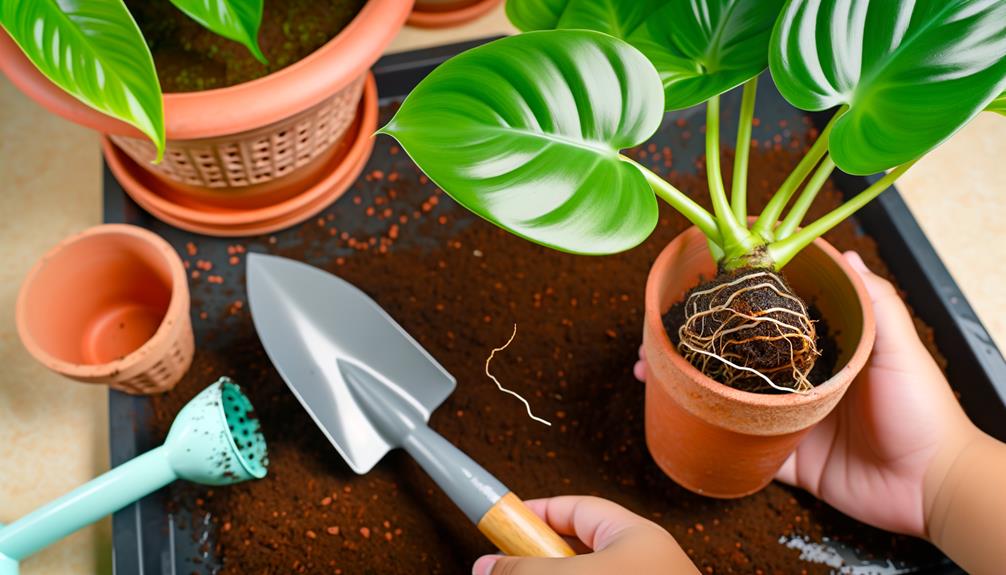
When potting or repotting a Heartleaf Philodendron, make certain the new container has enough drainage holes to prevent water accumulation and root rot. Select a pot that is only one size larger than the current one to avoid overwhelming the plant with excess substrate, which can lead to poor aeration.
The best time for repotting is during the spring or early summer, coinciding with the plant's active growth phase. Gently loosen the root ball to promote healthy root expansion and remove any decayed roots. Utilize a well-balanced, aerated potting mix, such as a blend of peat moss, perlite, and orchid bark, to ensure top-notch root health.
After repotting, water thoroughly and place the plant in indirect light to minimize transplant shock.
Conclusion
To wrap up, the ideal soil for a heartleaf philodendron strikes a balance between aeration and moisture retention. This contrasts the need for good drainage with the requirement for nutrient-dense content. Using a blend that incorporates potting mix, perlite, and peat moss can fulfill these standards successfully.
Consistent potting and repotting guarantee continuous root health and nutrient accessibility, additionally encouraging strong growth. Therefore, grasping and putting into practice these soil needs is crucial for the flourishing of heartleaf philodendrons.

